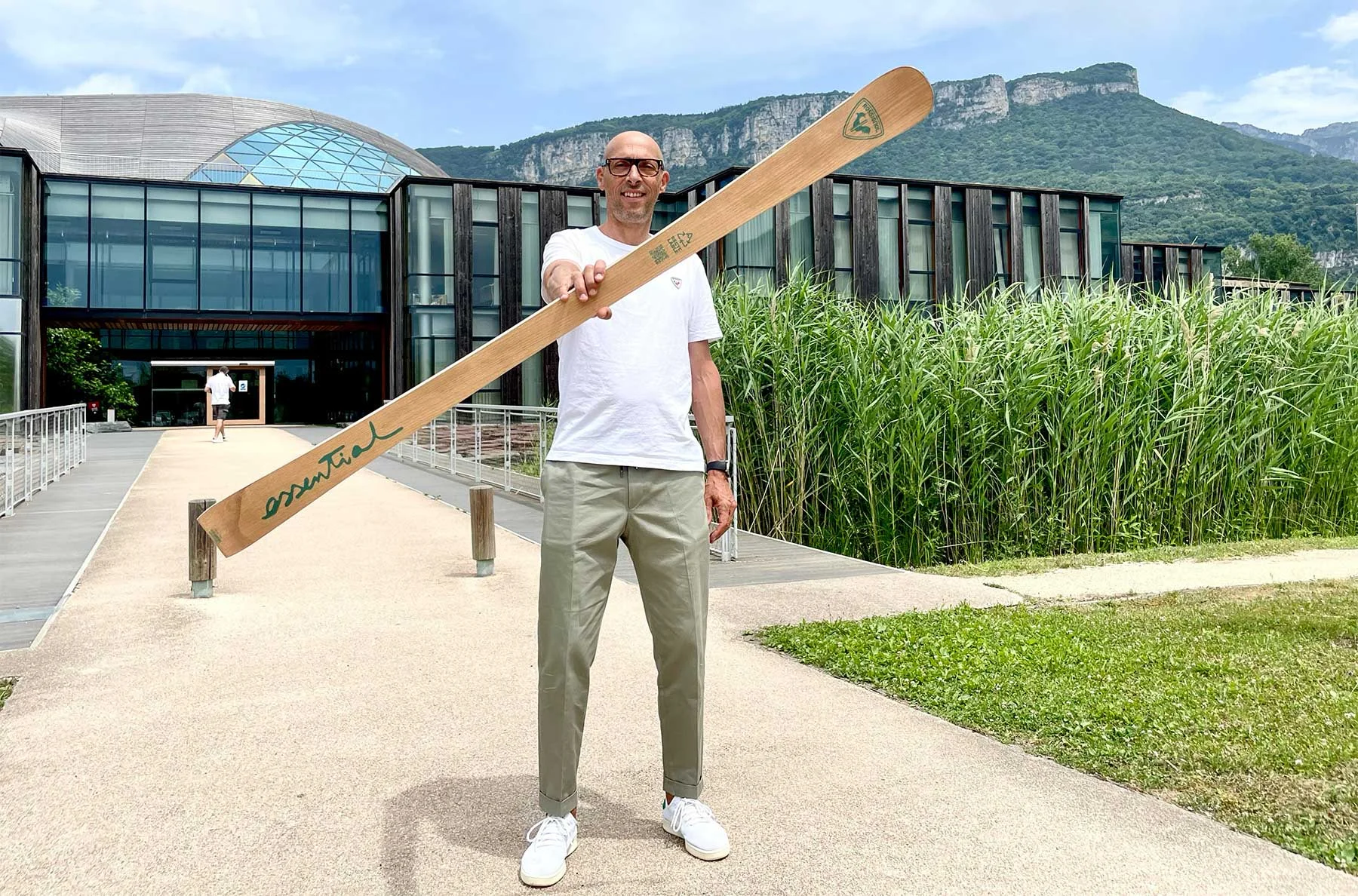Rossignol eco Essential ski


Al Morgan: Ski hardware production uses natural and man-made materials and a lot of energy. This is how it’s been done for decades. What stimulated Rossignol to embark on the Essential journey 10 years ago?
David Bouviér: We met with a specialist in industrial recycling, who explained to us that only 8% of a traditionally constructed ski can be recycled. At the same time, our R&D team, who are always working on ‘out of the box’ solutions had sustainability firmly on their radar. They had started to propose some different solutions to how we were currently
doing things.
In taking on the challenge of developing a recyclable and more sustainable ski, what was the biggest fear, and what opportunities presented themselves that you maybe didn’t envisage?
For the first time, we were really thinking up a solution to an industry-wide challenge. This was the biggest opportunity. We really feel that we are part of a movement towards a more sustainable future. Whether repairing or upcycling skis, the opportunities are really exciting.
The biggest challenge was to reverse our thinking about how we’ve been making skis for over 100 years. We started with only the sustainable or recyclable materials we could use. From this, we needed to find out if it was even possible to make a ski that could perform using these materials.
This was the biggest fear – the question of ‘Can we actually make a performance ski from recycled and sustainable materials?’.
I’ve been lucky enough to ski the Essential ski. I was a little sceptical as I headed up the lift, as I really didn’t know how it would perform. I was blown away by its performance. It skis better than many traditionally constructed performance piste skis.
How did you achieve this and where did the skiing performance sit on your set of requirements?
Our vision was a performance-driven solution. Performance is part of the DNA of our brands. We know that, for some people, sustainable solutions could equate to lower performance or quality. For us, performance, sustainability and quality were at the heart of this project. This is why it was so difficult!
Each time we added some elements to increase performance we had to ensure it would not impact the sustainability side of the project, and vice versa. It’s a very tough balance to achieve.
We are really happy with the outcome. We wanted similar skiabilty to our Hero Elite ST ski, and we think we achieved that.
Longevity is an important factor in how sustainable a product is. How durable is the new construction, and how long do these skis maintain their performance?
All the tests we do in the lab around durability tells us we have a very durable product. Additionally, our long-term on-snow testing has shown the product is very solid, and we’ve not seen any variance in performance or durability.
Sure, we’re conscious that this type of ski does have its limits and it’s dedicated to good skiers who are aware of the need to look after their kit.
You’ve spoken of this ski being recyclable. Why is it so difficult to recycle a ski, and how can consumers get a Rossignol Essential ski recycled?
Recycling skis is difficult for many reasons. First of all, it’s hard to collect skis from all areas of the world and bring them to a central recycling point. We have the facility to recycle our Essential skis in our facility in France.
For the product itself, all skis are made with many different fibres and glues, and it’s very difficult to separate skis into individual components.Every solution we found, to separate the materials, meant they could not be recycled.
To develop the easiest solution for our customers, each ski comes with details of exactly how to register the product and join the movement.
For more on Rossignol and the brand’s commitment to sustainability, click here